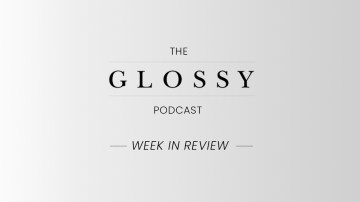On August 29, Gap posted strong earnings that pleased investors, doubling net income from a year prior and blowing past revenue expectations to $3.7 billion in the second quarter.
It’s a triumphant comeback for the company that has been struggling in recent years. With the exit of leaders like Sonia Syngal and a 7% drop in sales, new CEO Richard Dickson, who took over last year, has been working to turn things around at Gap. The numbers show that the plan is working.
Dickson said in his comments on the earnings call that Gap’s continued popularity with different age groups was one of its biggest assets. One of its best campaigns, he said, was the fall 2024 Get Loose campaign, focused on baggy and oversized clothing, which is popular among younger consumers.
“When you talk to different consumers of different age brackets, they’re all enthusiastically excited about Gap’s narrative and about where we can potentially go with this brand and its heritage,” Dickson said.
According to data provided to Glossy from Traackr, a data-driven influencer marketing company, Gap’s recent campaigns and collaborations have jumpstarted its media value and cultural footprint. In May, when it launched a collaboration with cottagecore brand Dôen, Gap had more influencer mentions than in any prior month this year. That equated to a 41% increase in unique influencer mentions and a 45% total increase in influencer mentions between months.
All in all, Traackr’s data shows a 73% increase in Gap’s influencer mentions from June and July in 2023 to the same period in 2024. Traackr’s senior influencer marketing consultant Halie Soprano said Gap’s strategic choice of collaborators, from Dôen to musical artists Tyla and Troye Sivan, have been instrumental in that growth. Influencer marketing, in general, continues to grow, with 75% of brands saying they are increasing their spend on influencer advertising this year.
“As a brand, it’s important to pick creators who can both show off the products and tell a story,” Soprano said. “Consumers look at brands as a reflection of their values and lifestyles. Brands need to look at influencers as more than just a face sporting their clothes or products and instead see them as an extension of their brand and values. In choosing Tyla and Sivan for musical ads, Gap is demonstrating both the utility of the clothes — comfy enough to dance and live in — and how Gap empowers you to live authentically.”
Gap worked with the creative agency Buttermilk on the campaigns involving both Tyla and Sivan. Data provided to Glossy by Buttermilk showed that the Troye Sivan campaign, which has only been live for a week, already has a 50% view rate, above the industry benchmark of 28%. Similarly, the engagement rate for the campaign so far is hovering near 9%, above the industry standard of 5%.
Deirdre Clemente, a historian who studies 20th-century fashion at the University of Nevada, Las Vegas, said that Gap’s adaptability has been a historical strength and part of the reason it has survived since the 1960s.
“These are the people who invented fast fashion,” Clemente said. “They invented the formula of seeing what people were buying and where the market was going, and leaning into it. I’ve always been impressed by their ability to roll with the punches and evolve.”




